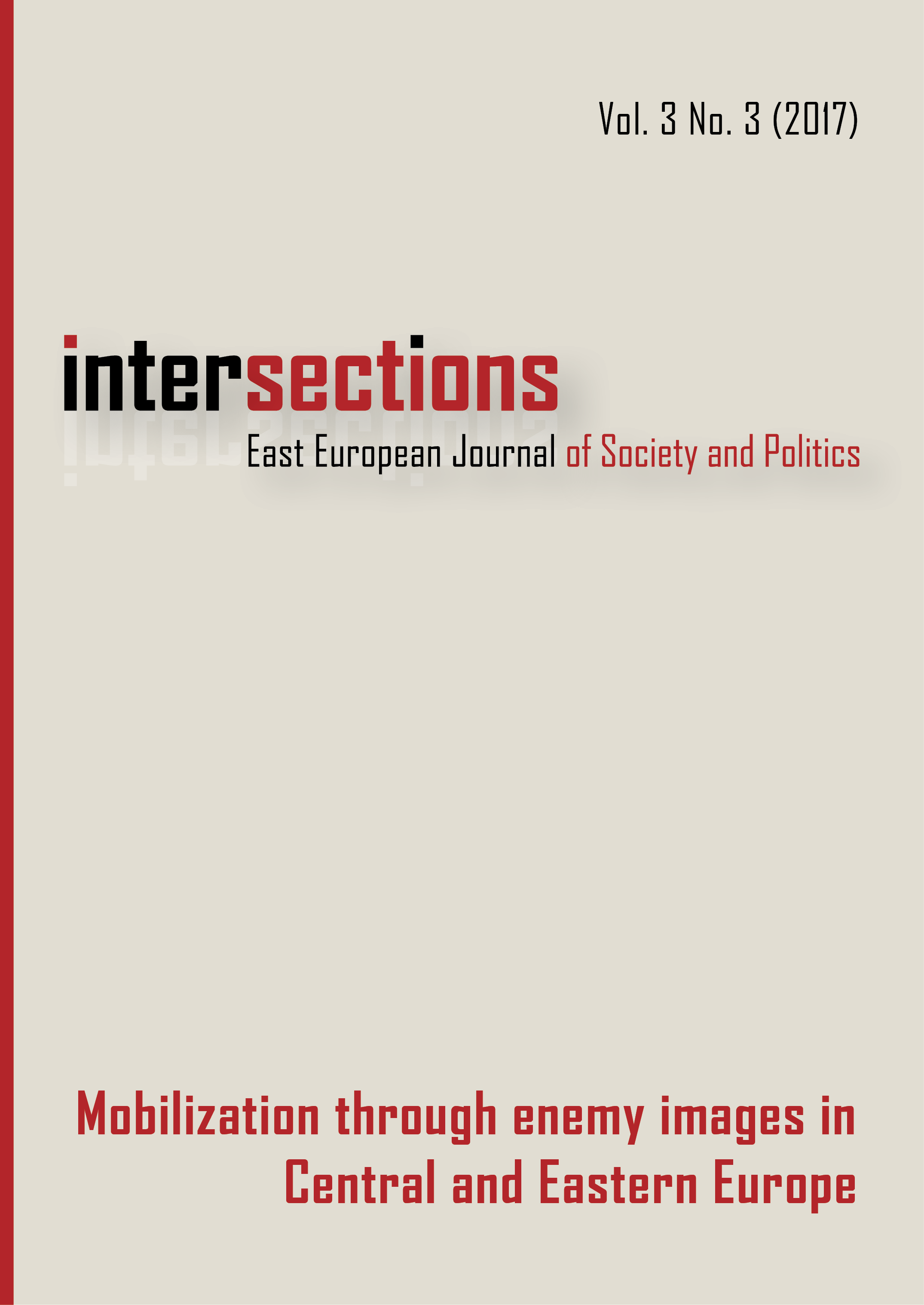Creating Suspicion and Vigilance
Using Enemy Images for Hindering Mobilization
DOI:
https://doi.org/10.17356/ieejsp.v3i3.366Abstract
In recent years, many theoretical and empirical analyses about the changing regimes of Central and Eastern Europe have been written, pointing out the authoritarian tendencies and radicalization in the region. Hungary is a significant case in the changing landscape of Central and Eastern Europe. The right-wing government rules the country with incontestable force, despising and disrespecting the norms of liberal democracies. Although the general impression is that the government has such a strong grip on power that resisting it is futile, in fact, it only enjoys only the support of 30 per cent of Hungarian citizens. Thus, it would be reasonable to expect the opposition to be able to effectively mobilize against the regime. In reality, no political opponent seems to stand a chance of defeating it. In order to explain why this is so, we focus on the way Orbán constantly creates images of ‘the enemy’ that keep alive an atmosphere of vigilance that blocks the efforts of critical actors to efficiently mobilize citizens. Since the political system in Hungary is highly centralized, the prime-minister’s speeches epitomize the logic and ideology of the regime. Our aim is to understand the mechanism through which the dominant political actors frame the enemy in a system of images, thereby creating an environment where critical actors are stripped of the resources needed to mobilize against them.

Downloads
Published
How to Cite
Issue
Section
License
Copyright Notice
Authors who publish with this journal agree to the following terms:
Authors retain copyright and grant the journal right of first publication, with the work three months after publication simultaneously licensed under a Creative Commons Attribution License that allows others to share the work with an acknowledgement of the work's authorship and initial publication in this journal.
Authors are able to enter into separate, additional contractual arrangements for the non-exclusive distribution of the journal's published version of the work (e.g., post it to an institutional repository or publish it in a book), with an acknowledgement of its initial publication in this journal. This acknowledgement is not automatic, it should be asked from the editors and can usually be obtained one year after its first publication in the journal.



